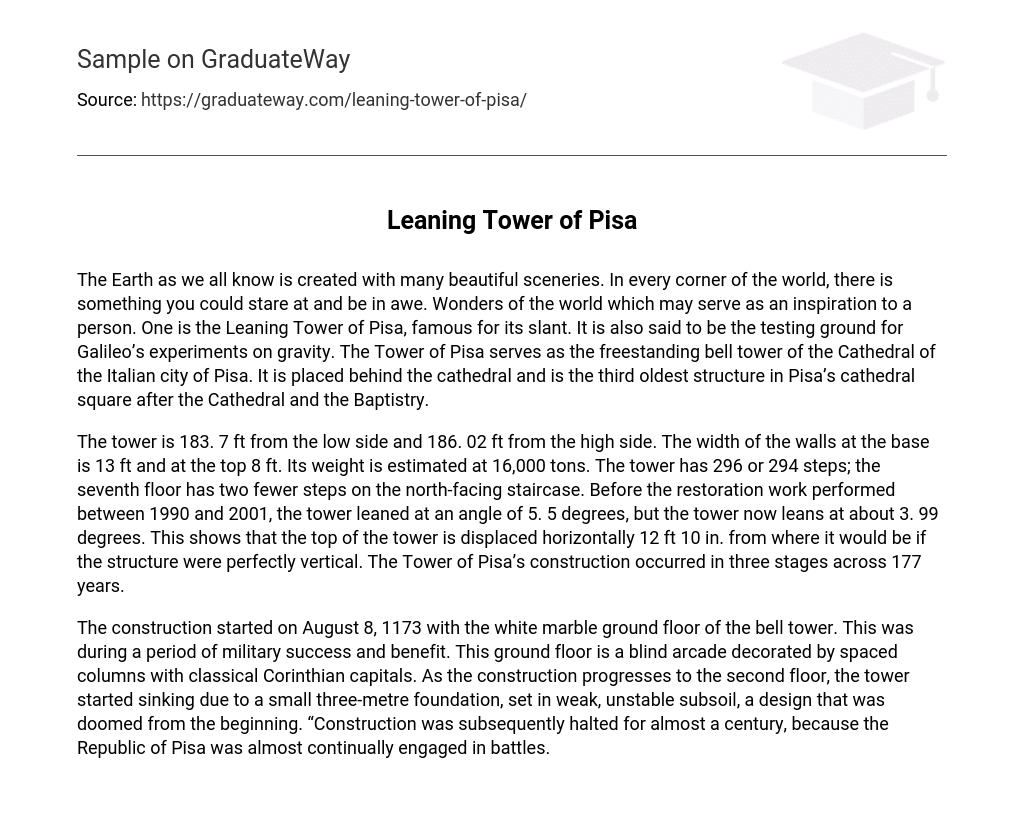The Earth is home to numerous stunning landscapes that can captivate anyone, offering awe-inspiring sights no matter where you are. One exceptional wonder that stands out among these incredible marvels is the Leaning Tower of Pisa. This architectural masterpiece, famous for its distinctive tilt, has also contributed to scientific research conducted by Galileo on gravity. Serving as the freestanding bell tower for the Cathedral of Pisa, it is located behind the cathedral and holds the position as the third oldest structure in Pisa’s cathedral square, following the Cathedral and Baptistry.
The Tower of Pisa is situated at a distance of 183.7 ft on the low side and 186.02 ft on the high side, featuring walls that are 13 ft wide at the base and 8 ft wide at the top. It weighs approximately 16,000 tons. The tower has either 296 or 294 steps, with an exception being the north-facing staircase on the seventh floor having two fewer steps than other sides. From 1990 to 2001, restoration work was carried out to correct its previous inclination of 5.5 degrees. Currently, it leans at around 3.99 degrees, resulting in a horizontal displacement of about12 ft10 in from its ideal vertical position.
Over a span of177 years, construction of the Tower of Pisa took place in three stages.
The construction of the bell tower began on August 8, 1173. It started with the white marble ground floor, which was designed during a time of military achievement and prosperity. The ground floor features a blind arcade adorned with spaced columns and classical Corinthian capitals. However, as the construction advanced to the second floor, the tower began to sink. This was due to its small foundation of only three meters, placed in weak and unstable subsoil. This flawed design doomed the construction from the very start. Consequently, the construction had to be stopped for almost a century. The Republic of Pisa, engaged in constant battles, could not devote resources to resume the construction.





